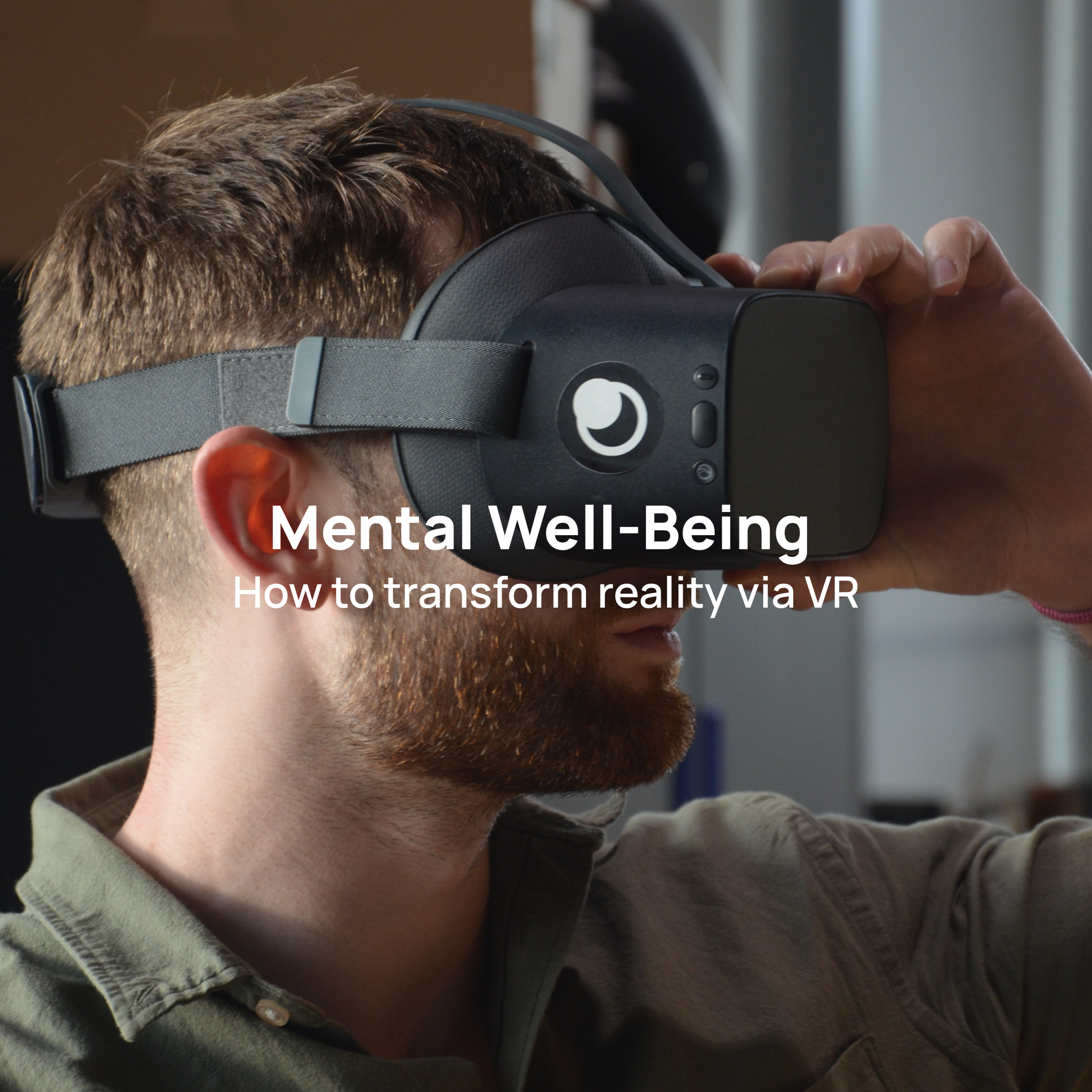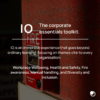
Research reveals that VR-based technology could significantly reduce psychological symptoms of stress, anxiety, and depression.
Transport yourself into a new reality.
Mental well-being in the workplace
There is a huge importance of mental well-being in the workplace. Without effective support, mental disorders and other mental health conditions can affect a person’s confidence and identity at work and capacity to work productively. 12 billion working days are lost every year to depression and anxiety alone. Good mental health at work and good management go hand in hand, and there is strong evidence that workplaces with high levels of mental well-being are more productive. Addressing well-being at work increases productivity by as much as 12%. Creating a supportive environment and making sure employees have the facilities to get help is very important and is the first step in building a better working environment. Incorporating VR into your workplace will be just as, if not more effective for individuals.
Transforming reality using VR
Over the last decade, research into advanced VR therapy techniques has shown to be effective for people with physical and psychological disabilities. Psychologist Albert Rizzo at the forefront of this research tells us how virtual reality is helping people face their fears and learn to overcome them. Rizzo says “In VR, we try to help by putting people in simulations of their fear environment and then systematically making it a little bit more provocative once they’ve attained a certain level.” Exposure therapy seeks to help decrease the intensity of the stress responses you might have to situations, thoughts, or memories which provoke anxiety or fear. Obstacles to the use of exposure therapy are explored and steps to lessen these obstacles are proposed. In particular, VR technology is discussed as a way to increase the availability of exposure therapy. Incorporating VR in therapy can increase the ease, acceptability, and effectiveness of treatment.
Other research revealed that VR-based technology could significantly reduce the psychological symptoms (stress, anxiety, and depression) of malignancies. Consequently, some research suggests that VR-based technology plays an essential role in improving anxiety symptoms. VR technology can simulate scenarios and experiences to create a life-like experience. VR experiences that are more immersive and interactive are more effective at yielding empathic outcomes in users, hence why VR can help aid and soothe mental well-being by transporting you to a different reality/setting.
Primary elements of VR
VR comprises 4 primary elements: virtual world, immersion, sensory feedback, and interactivity. This enables a person to connect with an artificial 3D environment or a sensory environment wherein the user’s physical movements, and motions reflect or stimulate the environment. The virtual environment replicates the physical world and allows the user to interact with it on a real-time basis. This simulation enables them to feel that they are a part of the virtual world. Immersion makes a user’s experience closer to reality using immersive graphical content and sound. The real-time interaction on screen gives a sense of inclusion and immersion between the user and the VR system. VR consists of a fully immersive, 3D environment that transports people to engaging, interactive environments that can promote new learning. VR technology also has the potential to assist in training, evaluation, delivery, and supervision of psychotherapy skills, and can provide patients with a physiologically and emotionally evocative experience which makes VR a valuable tool for mental health treatment.
Build your confidence
Learners are 275% more confident to apply the skills they learned after training in real-life scenarios. In particular, significant improvements in confidence were made when discussing sensitive topics in the workplace such as diversity and inclusion. MOONHUB’s diversity and inclusion VR training transports our learners into a private and immersive environment to enhance awareness and understanding of the value of an inclusive workforce. The immersive nature of VR provides a powerful new way to engage users and helps them to regain confidence, feel safe and overcome triggers. In addition, learners are 3.75x more emotionally connected to content than classroom learners as with VR training your attention is absorbed by 3D simulation.
Conclusion
VR is the perfect tool for raising awareness of social and environmental issues. The immersive technology puts users in someone else’s shoes and goes above and beyond traditional 2D depictions of abuse, neglect, or injustice. It allows viewers to see directly through the ‘eyes’ of a real or imagined subject and more specifically, VR can create embodied cognition. VR’s impact is clearly extensive and not just innovative but also significant. Not only is it transforming the way we do business, but also how we relate to one another, how we access education and even how we address our own fears. With this in mind, the topic of mental well-being becomes clearer with VR.








